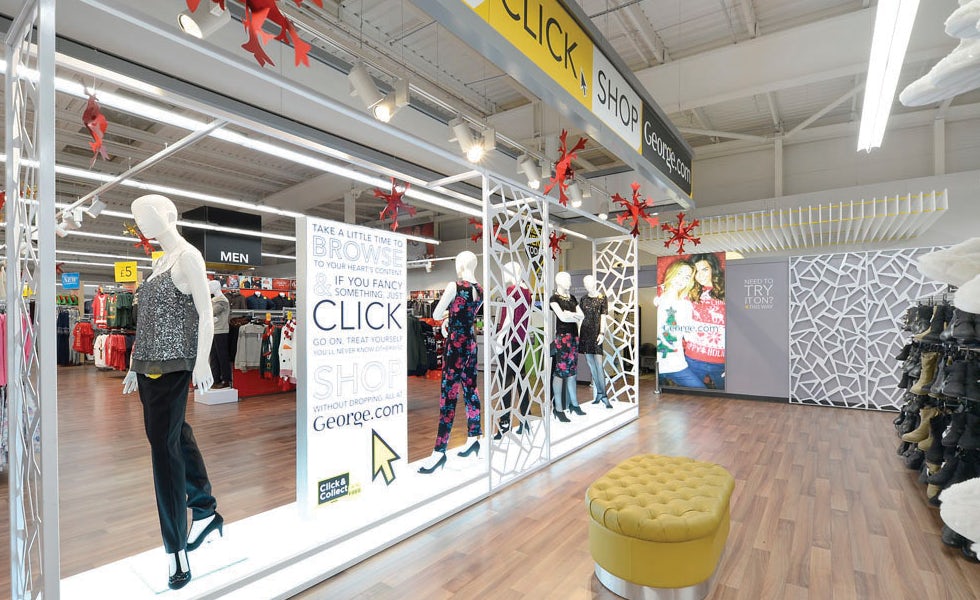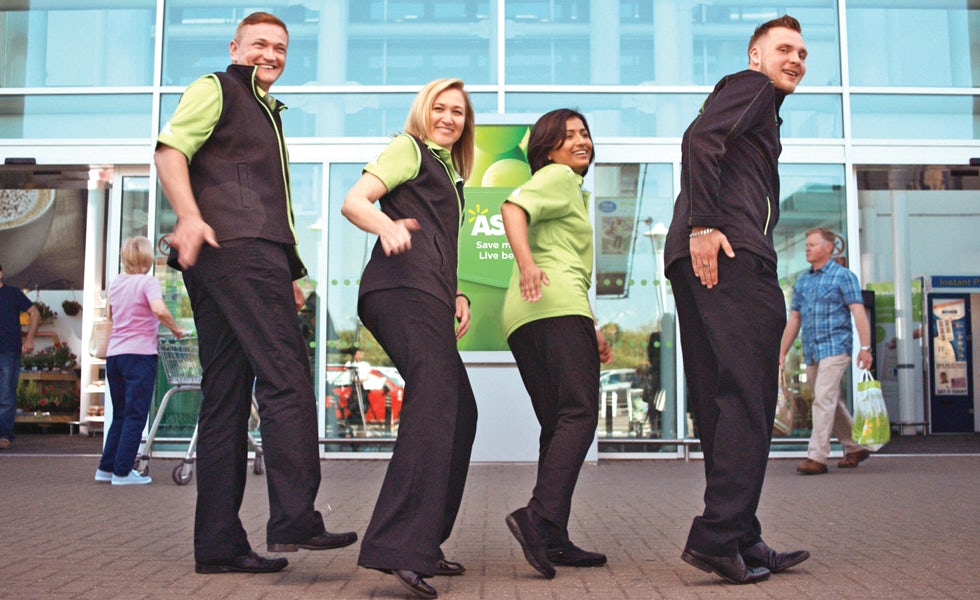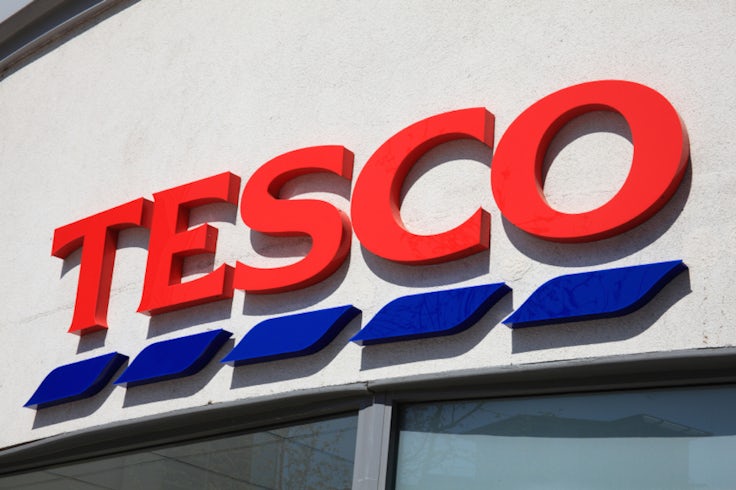How Asda plans to win back customers
Asda’s new chief customer officer Barry Williams feels the weight of responsibility for deciding the brand’s new direction.


Having just suffered one of the worst quarterly sales performances in its history, you would forgive Asda’s chief customer officer Barry Williams for looking a bit downtrodden. Yet as he poses for photos in the entrance of Asda House in Leeds, he is surprisingly upbeat.
Squeezed by the discounters Aldi and Lidl, and vigorously challenged on price by its closest competitors Tesco, Sainsbury’s and Morrisons, Williams is the man leading Asda’s marketing as it aims to recover from the toughest period in its 50-year existence. It is a difficult challenge for any marketer, but especially so for someone without a marketing background.
During his seven years at Asda, Williams has spent most of his time juggling food distribution and pricing roles. Yet eight months on from replacing former marketing boss Steve Smith, who has taken on a senior role at parent company Walmart, he is full of optimism about the unconventional switch.
“It has been a learning curve but the transition into marketing has not been a painful experience because I’ve inherited such a great team who give me their insight,” he says. He has brought in former Premier Foods marketer Claire Harrison-Church to lead the department day-to-day.
“The responsibility I now feel more than before is deciding on the direction of the Asda brand and where we need to be heading as a business. It can weigh on you.”
Williams is Asda through and through. He is keen to point out that his chief customer officer role also encompasses Asda’s health, store, pricing and customer relationship programmes, and not just marketing. “One of the things I’ve learnt very quickly is that advertising is the very last thing you need to worry about,” he jokes.
Moving into marketing
Williams recommends that more professionals should make the switch from commercial roles to marketing.
“The more experience you get inside a business, the more effective you become. I’ve been forced to look at it from a different angle and my perspective has changed. I feel like a guardian of this brand. I don’t have a supply base of 1,200 suppliers to manage daily any more but I do have millions of customers,” he says.

“Each retail organisation has three key functions – stores, sourcing and merchandising, and marketing. A marketer must aim to understand the ins and outs of all three.”
Having racked up 24 years in British retail – starting on the trading floor at one of the original discount supermarkets, Kwik Save – Williams has also directed food categories at supermarkets such as The Co-Op and Musgrave Group, owner of Budgens and Londis. As the grocery price wars continue to intensify, he admits that it can be difficult to switch off.
“I have five kids so it’s hard to switch off anyway, but if I pass a Tesco on a Saturday, I’m instantly thinking about work. Maintaining an interest out of work hours isn’t necessarily a bad thing. The acid test for me is at the pub on a Friday night when somebody asks, ‘Who do you work for? Do you feel proud?’” he muses.
“And I still feel it’s astonishing that I am sat on the executive board of the second-biggest retailer in the country. I don’t take a minute for granted. Retail is one of the very few meritocracies where you can get from the shop floor to the boardroom.”
Williams clearly believes in the offering Asda has created and even compares its forthright marketing message to the ‘mod’ culture he loves. “I like to ride my old Lambretta on the weekends with my mates; we’re just old mods that have never grown up,” he reveals. “Maybe I’m in danger of drawing parallels that aren’t there but, much like the mods, Asda has something in its DNA about being clear about what it stands for and not following the crowd. When we say, ‘Save money. Live better,’ it isn’t an empty slogan like some of our competitors’ and I think that’s really cool.”
Asda recently brought back its most recognisable advertising trope in a TV campaign celebrating its 50th anniversary: the ‘pocket tap’, where shoppers pat their back pockets prompting the jingling of loose change. It has now evolved to include taps on car bonnets to talk up Asda’s fuel pricing, for example.
The pocket tap is “here to stay” going forward, adds Williams, who says the gesture is an important part of the brand’s “warm” feel and heritage, and a “strategic advantage” over rivals. Some of the inspiration for the new ad made by agency VCCP – the first major above-the-line spend under Williams’ leadership – came from unexpected places, however.
“When I go to my local pub in Warwick and see the lads, they are always tapping their pocket in jest,” he says. “But I thought, hang on, there really is something in this. We also recently organised a charity event and friends of mine, the band Ocean Colour Scene, played for us. The lead singer Simon Fowler gets on the stage, says ‘Alright Asda’ and taps his pocket to the cheering crowd, and I thought to myself, ‘There’s a reason why we did this for so long.’
“What other supermarket has something like the pocket tap and such an emotional gesture?,” asks Williams.

Recent sales struggles
Despite his enthusiasm, Asda’s sales have progressively deteriorated over the past four quarters, with Sainsbury’s leapfrogging it to take the second biggest share of the grocery market behind Tesco in the 11 weeks to 30 June, according to data from Kantar Worldpanel. Asda’s like-for-like sales fell 4.7% in its Q2 financial report.
At the disappointing second-quarter announcement on 18 August, Asda CEO Andy Clarke even admitted: “We have certainly hit our nadir; every business has to have one.”
The supermarket is not alone in its struggles, though. Last week, Morrisons’ new boss David Potts revealed that its half-year profits have fallen a staggering 47%. Tesco, meanwhile, posted a disastrous £6.38bn annual loss earlier this year, the worst in its 96-year history. The tough market conditions have been surprising, admits Williams.
“Who would have expected the headlines we have been reading over the past nine months. Tesco is a phenomenal business, as is Morrisons. Who would have predicted some of those negative numbers? We have all been fighting for our lives to a certain degree. But I think the ones that avoid short-term distractions and knee-jerk reactions are the ones that will win.”
Williams openly admits that Asda had perhaps pushed its famous ‘everyday low price’ credentials a little too hard and says the brand has to speak on more of an emotional level in future.
Earlier this year, Asda switched its slogan to parent company Walmart’s ‘Save money. Live better’ and also adopted the US retail giant’s sunshine logo. Williams says these changes are allowing Asda to become a brand known for more than just the key battleground of price.
“Aldi and Lidl have done an excellent job with marketing and expanding their customer base. There are floating shoppers we have perhaps lost to them but emotive marketing is one of the key ways of winning them back.”
He adds: “Our previous slogan, ‘Save money every day’, was too limited. With the change [to ‘Save money. Live better’] we can become more of a lifestyle brand. There are people who have fallen out of love with the Asda brand and what it stands for.
I need to make sure we win them back and get the future generations on board.
“There are fundamentally two things that need to happen. I want to see more brand recommendations from our customers and word-of-mouth buzz, and I want to see emotional attachment return to our brand. We need to go after the public and reconnect with them.”
Restoring brand ‘warmth’
Despite its recent dip in trading, 51% of UK manufacturers recently ranked Asda as the UK’s top retail brand. It topped the 2015 UK PowerRanking list by Kantar Retail after scoring highly as the company with the clearest strategy and messaging. Williams is keen to credit the brand’s warm feel, even if he does admit that it needs to evolve.
“What is really important is a natural affection and historic warmth. If you look at any poll or buzz rating, the health of the brand is quite strong; it could be stronger, but it is pretty strong,” he says. “To be the best marketer, you have to portray the truths of your business. We now need to shout about our food quality more often as we have been trendsetters on everything from pulled pork to fruit and veg.

“Some of our rivals are trying to convince the public they are something that they are not, but the moves Tesco and Morrisons are making to try to take our crown on price do not concern me at all. If this is chess, then the more they play our game on price, the better placed we are to win.”
With Morrisons in the process of selling off its 140 M Local convenience stores and Tesco writing down the value of many of the unprofitable superstores blighting its portfolio, Williams says the grocery experience has to evolve too.
Asda has been at the forefront of adding click-and-collect to unusual places such as London Underground stations, car parks and student halls, while also putting 3D printing booths in stores. Williams says it is committed to “blurring the lines” between channels.
“We need to make it easy to go into a 60,000sq ft store, pick up six items and be out in five minutes. The same ease for click-and-collect has to be in the larger stores too. It shouldn’t be about what channels you choose but it all feeling like one brand.”
On the prospects of Asda copying Morrisons’ disastrous move into convenience stores, he says: “While Asda will say ‘never say never’ on convenience, it isn’t a concern right now; I have enough stores to worry about.”
Tesco CEO Dave Lewis recently told Marketing Week that the brand is starting to win the battle to bring Aldi converts back for their big weekly shop, but Williams is less certain of big stores’ immediate recovery.
“There is still a long way to go. You have to remind them that it is truly in their best interests, especially with limited time and money, to spend less and do their shop in one big store as opposed to five little ones. The shopping experience at Asda has grown but can still become even more compelling,” he explains.
Approach to ad spend
Rather than adopt a forceful approach to turning the business around, Williams says he is letting his marketing team breathe. “If on a Monday morning you are telling the team about every single campaign you’ve enjoyed watching on TV on Sunday and asking ‘Why aren’t we doing that?’, then you are in danger of becoming a frustrated marketer. You need to give them room to breathe. I give them the framework and direction, but above all I let them get on with it as I trust them.”
Overseeing a marketing department of 250 staff and managing more than 30 external ad agencies, Williams says Asda is most focused on not being “intrusive”. For the first half of 2015, Asda led the pack on supermarket ad spend after shelling out £41.6m, according to figures from Nielsen. Williams insists that spending consistently and being seen remains the right strategy. However, he admits: “We have to speak to agencies in a different way. It’s about getting real value for our money across all the channels.”
He adds: “Consumers are bombarded with messages these days and our challenge is to be truly engaging on platforms such as Facebook and Instagram. The challenge is to be truthful and then consumers believe you. I’m more for our shoppers being our influencers than anybody else. The minute you need to start relying on somebody else like [vlogger] Zoella to talk about your business, it tells you something about the health of a brand.”
When CEO Clarke unveiled Asda’s five-year strategy in November 2013, he pledged to spend more than £1bn lowering prices and £250m on improving the quality of products and stores. Nearly two years on, with sales falling, that strategy has been questioned by analysts. Williams, however, remains committed. “It could be that we make small amendments, but I’m convinced the strategy we originally laid out is still correct. We are modelled on the most successful retailer in the world, Walmart, and the US market is proof that value retailers are the ones that will win,” he says.
“Perhaps we have been guilty talking too much to our competitors on our ads – every time there is an offer on sprouts or something – but we are now talking more emotionally and directly to consumers.” And what about the pressure on him to deliver sales from those consumers? “What pressure?” replies Williams.
“Every year for the past 24 years, this business has got more difficult. It keeps us all on our toes.”
Confronting the health debate
The debate about whether manufacturers and retailers have a responsibility to curb sugar, fat and salt levels in food was rekindled recently after food chains Leon and Abokado followed Jamie Oliver’s restaurants in adding a 10p ‘sugar tax’ to sugary drinks on their menus. Supermarkets are often criticised for not doing enough in this area.
In 2014, Lidl introduced healthy aisles to ensure its tills were free of tempting sugary products, while Tesco has controversially moved to cut products such as Ribena from its children’s aisles. Asda, which previously reduced the added sugar in its range of own-label soft drinks by 22%, has been gradual in its approach, talking up its duty to offer consumers a choice.
“You could argue that some of our competitors have just been ticking boxes to make the headlines,” says Williams, in response to the various health-conscious moves. “We took a huge level of sugar out of our soft drinks range and continue to look to cut calories, we just don’t go lauding it to people. We spoke to customers and then we responded.
“I’m spending a lot of time making sure health is better aligned to our brand and will continue to do that. But it is about creating choices for customers and giving them the option rather than forcing them. That’s our approach.”






